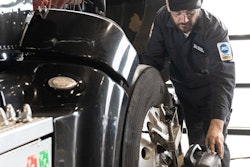When mining what might appear to be unlimited data, it’s important to focus on three key areas: Reducing the average age of your assets by balancing the replacement cycle; Developing the most advantageous asset specification for your applications; and establishing accurate reporting
Equipment-related purchases have a large bearing on cost, and the age of the truck has a direct correlation to repair and maintenance costs. Put simply, older trucks will tend to require more maintenance and therefore cost more to maintain and repair, depending on the type of warranty purchased at the time of the vehicle acquisition.
However, newer trucks, which will cost more, may be equipped with better safety equipment aimed at mitigating collisions, and these safety systems can be more expensive to repair should they get damaged.
Using the data you collect from your preventive maintenance combined with your running and unscheduled repairs, you can calculate your cost-per-mile based on the model year of your assets to determine by model the costs associated with your equipment.
This approach will give you a better understanding of the costs you are incurring based on the equipment application and will help you transition out of equipment that is costing you more to maintain.
By lowering the average age of your assets, you will maximize savings because you will be able to replace the assets that are the most expensive first while you improve vehicle uptime.
Maintenance and repair data will also show you abnormally high-cost trends that you should analyze and leverage in the component specification selection process on your next truck order. The goal of this exercise is to reduce failures, which lead to much higher operating costs.










